Tactics in the Chess Opening 1
Sicilian Defence Tactics in the Chess Opening 1A.C. van der Tak & Friso NijboerSICILIAN DEEENCE 2003 Interchess BV Published by New In Chess, Alkmaar, The Netherlands www.newinchess.com All rights reserved. No part of this book may be reproduced, stored in a retrieval system or transmitted in any form or by any means, electronic, mechanical, photocopying, recording or otherwise, without the prior written permission from the publisher. Cover design and drawing: Joppe Andriessen Printing: A-D Druk BV, Zeist, The Netherlands Production: Anton Schermer Translation: Piet Verhagen Printed in the Netherlands ISBN 90-5691-112-0 Tactics in the Chess Opening In six volumes our series Tactics in the Chess Opening covers the entire range of openings from a tactical point of view. Each volume has 250 fully annotated games, arranged by NICKEY, the opening classification system of New In Chess. Sicilian Defence In this book you will find carefully selected and expertly annotated Sicilian games full of unexpected turns and brilliant surprise attacks. 2003 Interchess BV Published by New In Chess, Alkmaar, The Netherlands www.newinchess.com All rights reserved. No part of this book may be reproduced, stored in a retrieval system or transmitted in any form or by any means, electronic, mechanical, photocopying, recording or otherwise, without the prior written permission from the publisher. Cover design and drawing: Joppe Andriessen Printing: A-D Druk BV, Zeist, The Netherlands Production: Anton Schermer Translation: Piet Verhagen Printed in the Netherlands ISBN 90-5691-112-0 Tactics in the Chess Opening In six volumes our series Tactics in the Chess Opening covers the entire range of openings from a tactical point of view. Each volume has 250 fully annotated games, arranged by NICKEY, the opening classification system of New In Chess. Sicilian Defence In this book you will find carefully selected and expertly annotated Sicilian games full of unexpected turns and brilliant surprise attacks. You can study these games or just enjoy them, but either way they will end up making you a stronger player! | 1. Sicilian Defence | 1.e4 c5 | | 2. Open Games | 1.e4 e5 | | 3. Semi-open Games | 1.e4 rest | | 4. Queens Gambit | 1.d4 d5 | | 5. Indian Openings | 1d4 Nf6 | 6.
Flank Openings and Gambits | 1.c4, 1.Nf3 etc. |
A.C. van der Tak Najdorf Variation Black plays 2d6 and 5a6 SI 4.6  Arencibia Arencibia Martin del Campo Matanzas 1994 1.e4 c5 2.Nf3 d6 3.d4 cxd4 4.Nxd4 Nf6 5.Nc3 a6 6.Bg5 e6 7.f4 Nc6!? A provocative move for which there is no known refutation. 8.Nxc6 8.e5 at once is another attempt to prove that Blacks previous move is no good, but after 8h6 9.Bh4 Nxd4! 10.Qxd4 (10.exf6? looks like a refutation but isnt: 10Nf5! 11.fxg7 Qxh4+ 12.g3 Nxg3 13.gxh8Q Ne4+ 14.Ke2 Qf2+ 15.Kd3 Nc5+ 16.Kc4 b5+, and the white king is doomed, e.g. 17.Kb4 a5+ 18.Kxb5 Rb8+ 19.Kxa5 Nb3+ 20.cxb3 Qa7+ or 17.Nxb5 axb5+ 18.Kc3 b4+ 19.Kxb4 Ra4+) 10dxe5 11.Qxd8+ Kxd8 12.fxe5 g5, and Black holds, e.g. 13.exf6 gxh4 14.0-0-0+ Kc7 15.Rd4 Bd7 16.Rxh4 Bc6 17.Ne4 Rg8 18.g3 Rg6. 11Nd5 12.Ne4 After 12.Nxd5 cxd5 13.Qh5 Qb6! Black has good counterplay, e.g. 14.g6 Qb4+ 15.Kd1 Qxb2 16.gxf7+ Kd7 17.Rc1 dxe5. 12Qb6 13.Bd3 hxg5 14.Bf2 An example with 14.Bg3 is 14Nf4 15.Bxf4 gxf4 16.Nxd6+ Bxd6 17.exd6 Qxb2 18.0-0 Qd4+ 19.Kh1 Qxd6, with good play for Black, Gongora-Abreu, Cuban championship 2001. 14Qxb2 Martin del Campo Matanzas 1994 1.e4 c5 2.Nf3 d6 3.d4 cxd4 4.Nxd4 Nf6 5.Nc3 a6 6.Bg5 e6 7.f4 Nc6!? A provocative move for which there is no known refutation. 8.Nxc6 8.e5 at once is another attempt to prove that Blacks previous move is no good, but after 8h6 9.Bh4 Nxd4! 10.Qxd4 (10.exf6? looks like a refutation but isnt: 10Nf5! 11.fxg7 Qxh4+ 12.g3 Nxg3 13.gxh8Q Ne4+ 14.Ke2 Qf2+ 15.Kd3 Nc5+ 16.Kc4 b5+, and the white king is doomed, e.g. 17.Kb4 a5+ 18.Kxb5 Rb8+ 19.Kxa5 Nb3+ 20.cxb3 Qa7+ or 17.Nxb5 axb5+ 18.Kc3 b4+ 19.Kxb4 Ra4+) 10dxe5 11.Qxd8+ Kxd8 12.fxe5 g5, and Black holds, e.g. 13.exf6 gxh4 14.0-0-0+ Kc7 15.Rd4 Bd7 16.Rxh4 Bc6 17.Ne4 Rg8 18.g3 Rg6. 11Nd5 12.Ne4 After 12.Nxd5 cxd5 13.Qh5 Qb6! Black has good counterplay, e.g. 14.g6 Qb4+ 15.Kd1 Qxb2 16.gxf7+ Kd7 17.Rc1 dxe5. 12Qb6 13.Bd3 hxg5 14.Bf2 An example with 14.Bg3 is 14Nf4 15.Bxf4 gxf4 16.Nxd6+ Bxd6 17.exd6 Qxb2 18.0-0 Qd4+ 19.Kh1 Qxd6, with good play for Black, Gongora-Abreu, Cuban championship 2001. 14Qxb2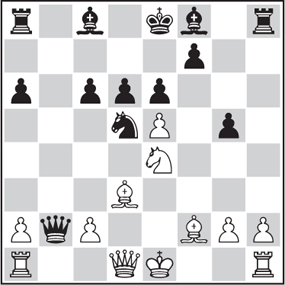 15.0-0 15.Nxd6+ Bxd6 16.exd6 Qe5+ or 15.exd6 f5 is good for Black. 15Qxe5 16.Bg3 Qd4+ Worth considering is 16Nf4!?, a suggestion from the English grandmaster Tony Kosten. 17.Kh1 f5! 17Ne3?! is risky; 18.Qf3 Nxf1 19.Rxf1 f5 20.c3! yields White good attacking chances, e.g. 20Qb6 21.Nxd6+ Bxd6 22.Bxd6 Ra7 23.Rb1 g4 24.Qe2 Qd8 25.Be5 Rf8 26.Bd4, A.Vitolinsh-Drilinsh, Riga 1990. 18.c3 Nxc3 19.Nxc3 Qxc3 20.Rc1 Qa5 After 20Qg7 21.Rxc6 f4 22.Qc2! White has good compensation, Mller-Dinstuhl, German Bundesliga 1997. 21.Rxc6 Bb7 Another possibility is 21Be7, whereupon White plays 22.Qe2, e.g. 22Kf7 23.Rfc1 f4 24.Rc7 Qe5 25.Qc2 fxg3 26.Rf1+ Kg8 27.Bh7+ Rxh7 28.Qg6+ Rg7 29.Qe8+ Kh7 30.Qh5+ Kg8, and a draw through perpetual check, according to Kosten. 22.Qb3! Bxc6 23.Qxe6+ Kd8 24.Rxf5 24.Qf6+ is not convincing: 24Be7 25.Qxh8+ Kd7 26.Qh5 Rf8. 24Qc3 15.0-0 15.Nxd6+ Bxd6 16.exd6 Qe5+ or 15.exd6 f5 is good for Black. 15Qxe5 16.Bg3 Qd4+ Worth considering is 16Nf4!?, a suggestion from the English grandmaster Tony Kosten. 17.Kh1 f5! 17Ne3?! is risky; 18.Qf3 Nxf1 19.Rxf1 f5 20.c3! yields White good attacking chances, e.g. 20Qb6 21.Nxd6+ Bxd6 22.Bxd6 Ra7 23.Rb1 g4 24.Qe2 Qd8 25.Be5 Rf8 26.Bd4, A.Vitolinsh-Drilinsh, Riga 1990. 18.c3 Nxc3 19.Nxc3 Qxc3 20.Rc1 Qa5 After 20Qg7 21.Rxc6 f4 22.Qc2! White has good compensation, Mller-Dinstuhl, German Bundesliga 1997. 21.Rxc6 Bb7 Another possibility is 21Be7, whereupon White plays 22.Qe2, e.g. 22Kf7 23.Rfc1 f4 24.Rc7 Qe5 25.Qc2 fxg3 26.Rf1+ Kg8 27.Bh7+ Rxh7 28.Qg6+ Rg7 29.Qe8+ Kh7 30.Qh5+ Kg8, and a draw through perpetual check, according to Kosten. 22.Qb3! Bxc6 23.Qxe6+ Kd8 24.Rxf5 24.Qf6+ is not convincing: 24Be7 25.Qxh8+ Kd7 26.Qh5 Rf8. 24Qc3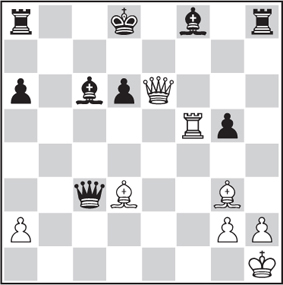 24Qa3 is met by 25.Be1! a5 26.Rf7 Qxd3 27.Qf6+ Ke8 28.Qe6+ Kd8 29.Qf6+, and perpetual check. 25.Be1? White should have gone for the draw: 25.Rxf8+ Rxf8 26.Qxd6+ Ke8 27.Qe6+, and perpetual check; 27.Bg6+?! is weaker: 27Rf7 28.Qe6+ Kd8 29.Bxf7 Qc1+ 30.Be1 Rb8 31.Qd6+ Kc8 32.Be6+ Kb7. 25.Be1? White should have gone for the draw: 25.Rxf8+ Rxf8 26.Qxd6+ Ke8 27.Qe6+, and perpetual check; 27.Bg6+?! is weaker: 27Rf7 28.Qe6+ Kd8 29.Bxf7 Qc1+ 30.Be1 Rb8 31.Qd6+ Kc8 32.Be6+ Kb7. 24Qa3 is met by 25.Be1! a5 26.Rf7 Qxd3 27.Qf6+ Ke8 28.Qe6+ Kd8 29.Qf6+, and perpetual check. 25.Be1? White should have gone for the draw: 25.Rxf8+ Rxf8 26.Qxd6+ Ke8 27.Qe6+, and perpetual check; 27.Bg6+?! is weaker: 27Rf7 28.Qe6+ Kd8 29.Bxf7 Qc1+ 30.Be1 Rb8 31.Qd6+ Kc8 32.Be6+ Kb7. 25.Be1? White should have gone for the draw: 25.Rxf8+ Rxf8 26.Qxd6+ Ke8 27.Qe6+, and perpetual check; 27.Bg6+?! is weaker: 27Rf7 28.Qe6+ Kd8 29.Bxf7 Qc1+ 30.Be1 Rb8 31.Qd6+ Kc8 32.Be6+ Kb7. White may well have thought that the text would lead to a quick win; if Qc3 retreats, 26.Ba5+ is fatal. 25Bd7! Here White must have kicked himself! 26.Qe2? A last resort would have been 26.Qxd7+ Kxd7 27.Bxc3, but this would also have been very good for Black. 26Qa1 Now Be1 is pinned as well! 27.Qf1 Bg7 Covering Qa1 and rendering 28.Ba5 harmless. 28.Rf7 Qe5 29.h3 Bc6 30.Bf5 Rf8 31.Rxf8+ Bxf8 32.Bg4 Bg7 33.Bd2 Rb8 White resigned. SI 5.2  Murey Murey Yudasin Podolsk 1991 1.e4 c5 2.Nf3 d6 3.d4 cxd4 4.Nxd4 Nf6 5.Nc3 a6 6.Bg5 e6 7.f4 Qc7 8.Qf3 b5 9.f5!? Other possibilities are 9.Bxf6 gxf6 10.e5 Bb7 11.Qh5 and 9.0-0-0 b4 10.e5 Bb7 11.Ncb5, with very complicated play in both cases. 10.Ncb5! Yudasin Podolsk 1991 1.e4 c5 2.Nf3 d6 3.d4 cxd4 4.Nxd4 Nf6 5.Nc3 a6 6.Bg5 e6 7.f4 Qc7 8.Qf3 b5 9.f5!? Other possibilities are 9.Bxf6 gxf6 10.e5 Bb7 11.Qh5 and 9.0-0-0 b4 10.e5 Bb7 11.Ncb5, with very complicated play in both cases. 10.Ncb5! The point of 9.f5!?. 10.Ncb5! The point of 9.f5!?. 10.Ncb5! The point of 9.f5!?. The point of 9.f5!?. No good is 10.fxe6? bxc3 11.Bxf6 cxb2 12.Rb1 gxf6 13.Qxf6 Qc3+ 14.Kf2 fxe6 15.Qxh8 Nc6, and Black wins. 10axb5 A better alternative may be 10Qb7!?; after 11.fxe6 fxe6, 12.Bxf6 gxf6 13.Qxf6 Qxe4+ 14.Kf2 Qe5 15.Nc7+ Kd7 16.Qxe5 dxe5 17.Nxa8 Bc5 is very good for Black, Ernst-Ungureanu, Berlin 1988, but 12.e5 Qxf3 13.Nc7+ (13.gxf3 axb5 14.exf6 Kf7! is unclear) 13Kd7 14.Nxf3 Kxc7 15.exf6 gxf6 16.Bxf6 Rg8 results in a roughly equal position. 11.fxe6!? The alternative 11.Bxb5+ leads to unclear play: 11Bd7 12.fxe6 Bxb5 13.Nxb5 Qc5, e.g. 14.Bxf6 Qxb5 15.Bxg7 Bxg7 16.Qxf7+ Kd8 17.Qxg7 Re8. 11Be7!? Less good is 11fxe6?! 12.Bxf6 gxf6 13.Qxf6, with good prospects for White. 13.Bxf6!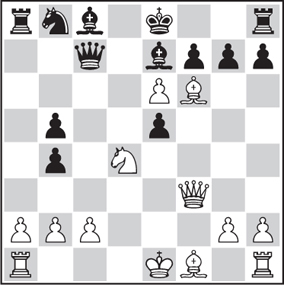 After 13.Bxb5+?! Kf8 14.Bxf6 Black can recapture on f6 with the bishop, after which White has insufficient compensation for the sacrificed piece. 13.Nxb5?! Qb7! looks good for Black as well. 13gxf6!? 13Bxf6?! would have been good for White: 14.Nxb5! Qc6 15.Qxc6+ Nxc6 16.Nc7+ Ke7 17.Nxa8 Nd4 18.0-0-0. 14.Bxb5+ Kf8 15.Nf5 Bxe6 In the game Murey-Spraggett, Paris 1991, Black played 15fxe6?! here; after 16.Nxe7 Kxe7 17.Qxa8 Qb6 18.Qa4 Qd4 19.a3 (19.Rd1! should be good as well) 19Bd7, 20.Bxd7! Qe3+ 21.Kf1 Qf4+ 22.Ke2 Qe4+ 23.Kd1 would have been good for White. 16.Nxe7 Ra5! 17.Qxf6 Rxb5 18.Rf1 Qxc2 18Ke8 19.Qxh8+ Kxe7 20.Qxh7 would have led to an unclear position with slightly better chances for White. 16.Nxe7 Ra5! 17.Qxf6 Rxb5 18.Rf1 Qxc2 18Ke8 19.Qxh8+ Kxe7 20.Qxh7 would have led to an unclear position with slightly better chances for White. After 13.Bxb5+?! Kf8 14.Bxf6 Black can recapture on f6 with the bishop, after which White has insufficient compensation for the sacrificed piece. 13.Nxb5?! Qb7! looks good for Black as well. 13gxf6!? 13Bxf6?! would have been good for White: 14.Nxb5! Qc6 15.Qxc6+ Nxc6 16.Nc7+ Ke7 17.Nxa8 Nd4 18.0-0-0. 14.Bxb5+ Kf8 15.Nf5 Bxe6 In the game Murey-Spraggett, Paris 1991, Black played 15fxe6?! here; after 16.Nxe7 Kxe7 17.Qxa8 Qb6 18.Qa4 Qd4 19.a3 (19.Rd1! should be good as well) 19Bd7, 20.Bxd7! Qe3+ 21.Kf1 Qf4+ 22.Ke2 Qe4+ 23.Kd1 would have been good for White. 16.Nxe7 Ra5! 17.Qxf6 Rxb5 18.Rf1 Qxc2 18Ke8 19.Qxh8+ Kxe7 20.Qxh7 would have led to an unclear position with slightly better chances for White. 16.Nxe7 Ra5! 17.Qxf6 Rxb5 18.Rf1 Qxc2 18Ke8 19.Qxh8+ Kxe7 20.Qxh7 would have led to an unclear position with slightly better chances for White. Now the tension dissolves in a peaceful perpetual check. 19.Qxe6 Qe4+ 20.Kd2 Qd4+ 21.Ke2 Qxb2+ 22.Ke3 Qc3+ 23.Ke2 Qc2+ 24.Ke1 Qe4+ 25.Kd2 Qd4+ | Next page
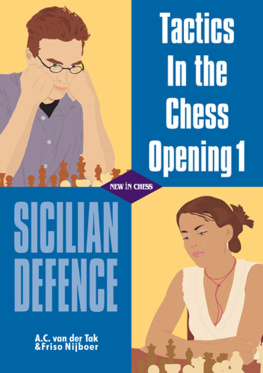
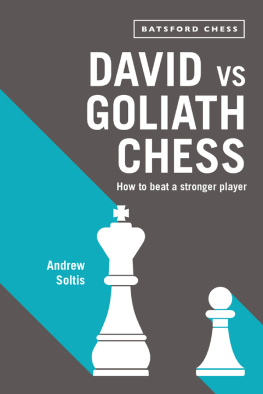
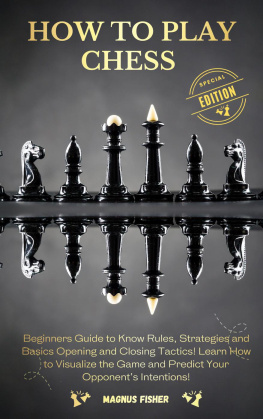
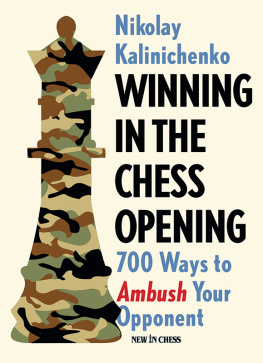
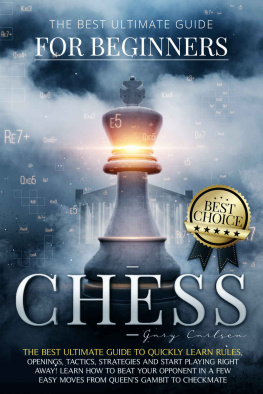
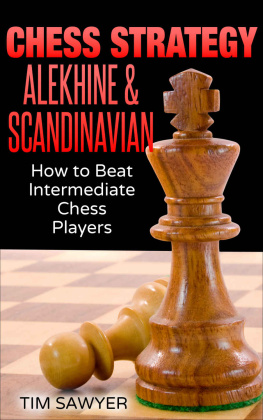
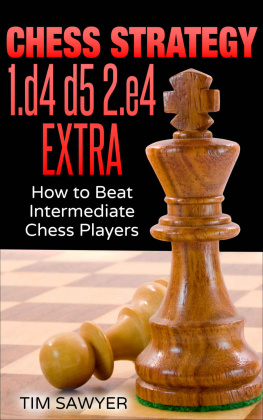
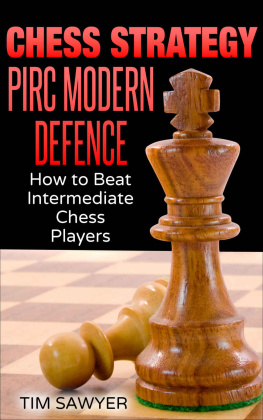
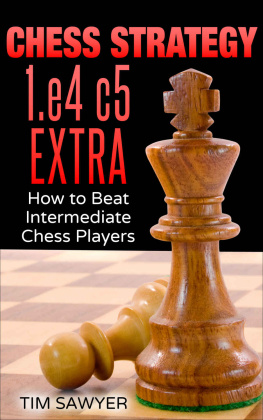
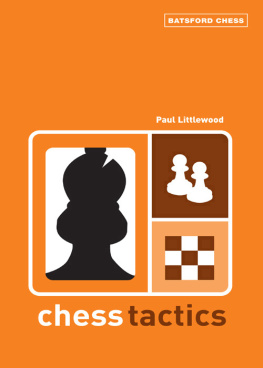
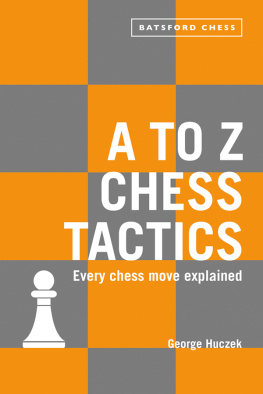
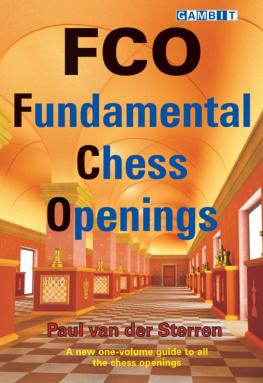
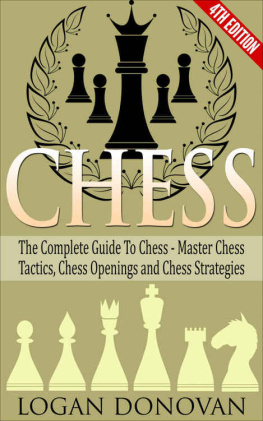
 2003 Interchess BV Published by New In Chess, Alkmaar, The Netherlands www.newinchess.com All rights reserved. No part of this book may be reproduced, stored in a retrieval system or transmitted in any form or by any means, electronic, mechanical, photocopying, recording or otherwise, without the prior written permission from the publisher. Cover design and drawing: Joppe Andriessen Printing: A-D Druk BV, Zeist, The Netherlands Production: Anton Schermer Translation: Piet Verhagen Printed in the Netherlands ISBN 90-5691-112-0 Tactics in the Chess Opening In six volumes our series Tactics in the Chess Opening covers the entire range of openings from a tactical point of view. Each volume has 250 fully annotated games, arranged by NICKEY, the opening classification system of New In Chess. Sicilian Defence In this book you will find carefully selected and expertly annotated Sicilian games full of unexpected turns and brilliant surprise attacks.
2003 Interchess BV Published by New In Chess, Alkmaar, The Netherlands www.newinchess.com All rights reserved. No part of this book may be reproduced, stored in a retrieval system or transmitted in any form or by any means, electronic, mechanical, photocopying, recording or otherwise, without the prior written permission from the publisher. Cover design and drawing: Joppe Andriessen Printing: A-D Druk BV, Zeist, The Netherlands Production: Anton Schermer Translation: Piet Verhagen Printed in the Netherlands ISBN 90-5691-112-0 Tactics in the Chess Opening In six volumes our series Tactics in the Chess Opening covers the entire range of openings from a tactical point of view. Each volume has 250 fully annotated games, arranged by NICKEY, the opening classification system of New In Chess. Sicilian Defence In this book you will find carefully selected and expertly annotated Sicilian games full of unexpected turns and brilliant surprise attacks. Arencibia
Arencibia Martin del Campo Matanzas 1994 1.e4 c5 2.Nf3 d6 3.d4 cxd4 4.Nxd4 Nf6 5.Nc3 a6 6.Bg5 e6 7.f4 Nc6!? A provocative move for which there is no known refutation. 8.Nxc6 8.e5 at once is another attempt to prove that Blacks previous move is no good, but after 8h6 9.Bh4 Nxd4! 10.Qxd4 (10.exf6? looks like a refutation but isnt: 10Nf5! 11.fxg7 Qxh4+ 12.g3 Nxg3 13.gxh8Q Ne4+ 14.Ke2 Qf2+ 15.Kd3 Nc5+ 16.Kc4 b5+, and the white king is doomed, e.g. 17.Kb4 a5+ 18.Kxb5 Rb8+ 19.Kxa5 Nb3+ 20.cxb3 Qa7+ or 17.Nxb5 axb5+ 18.Kc3 b4+ 19.Kxb4 Ra4+) 10dxe5 11.Qxd8+ Kxd8 12.fxe5 g5, and Black holds, e.g. 13.exf6 gxh4 14.0-0-0+ Kc7 15.Rd4 Bd7 16.Rxh4 Bc6 17.Ne4 Rg8 18.g3 Rg6. 11Nd5 12.Ne4 After 12.Nxd5 cxd5 13.Qh5 Qb6! Black has good counterplay, e.g. 14.g6 Qb4+ 15.Kd1 Qxb2 16.gxf7+ Kd7 17.Rc1 dxe5. 12Qb6 13.Bd3 hxg5 14.Bf2 An example with 14.Bg3 is 14Nf4 15.Bxf4 gxf4 16.Nxd6+ Bxd6 17.exd6 Qxb2 18.0-0 Qd4+ 19.Kh1 Qxd6, with good play for Black, Gongora-Abreu, Cuban championship 2001. 14Qxb2
Martin del Campo Matanzas 1994 1.e4 c5 2.Nf3 d6 3.d4 cxd4 4.Nxd4 Nf6 5.Nc3 a6 6.Bg5 e6 7.f4 Nc6!? A provocative move for which there is no known refutation. 8.Nxc6 8.e5 at once is another attempt to prove that Blacks previous move is no good, but after 8h6 9.Bh4 Nxd4! 10.Qxd4 (10.exf6? looks like a refutation but isnt: 10Nf5! 11.fxg7 Qxh4+ 12.g3 Nxg3 13.gxh8Q Ne4+ 14.Ke2 Qf2+ 15.Kd3 Nc5+ 16.Kc4 b5+, and the white king is doomed, e.g. 17.Kb4 a5+ 18.Kxb5 Rb8+ 19.Kxa5 Nb3+ 20.cxb3 Qa7+ or 17.Nxb5 axb5+ 18.Kc3 b4+ 19.Kxb4 Ra4+) 10dxe5 11.Qxd8+ Kxd8 12.fxe5 g5, and Black holds, e.g. 13.exf6 gxh4 14.0-0-0+ Kc7 15.Rd4 Bd7 16.Rxh4 Bc6 17.Ne4 Rg8 18.g3 Rg6. 11Nd5 12.Ne4 After 12.Nxd5 cxd5 13.Qh5 Qb6! Black has good counterplay, e.g. 14.g6 Qb4+ 15.Kd1 Qxb2 16.gxf7+ Kd7 17.Rc1 dxe5. 12Qb6 13.Bd3 hxg5 14.Bf2 An example with 14.Bg3 is 14Nf4 15.Bxf4 gxf4 16.Nxd6+ Bxd6 17.exd6 Qxb2 18.0-0 Qd4+ 19.Kh1 Qxd6, with good play for Black, Gongora-Abreu, Cuban championship 2001. 14Qxb2 15.0-0 15.Nxd6+ Bxd6 16.exd6 Qe5+ or 15.exd6 f5 is good for Black. 15Qxe5 16.Bg3 Qd4+ Worth considering is 16Nf4!?, a suggestion from the English grandmaster Tony Kosten. 17.Kh1 f5! 17Ne3?! is risky; 18.Qf3 Nxf1 19.Rxf1 f5 20.c3! yields White good attacking chances, e.g. 20Qb6 21.Nxd6+ Bxd6 22.Bxd6 Ra7 23.Rb1 g4 24.Qe2 Qd8 25.Be5 Rf8 26.Bd4, A.Vitolinsh-Drilinsh, Riga 1990. 18.c3 Nxc3 19.Nxc3 Qxc3 20.Rc1 Qa5 After 20Qg7 21.Rxc6 f4 22.Qc2! White has good compensation, Mller-Dinstuhl, German Bundesliga 1997. 21.Rxc6 Bb7 Another possibility is 21Be7, whereupon White plays 22.Qe2, e.g. 22Kf7 23.Rfc1 f4 24.Rc7 Qe5 25.Qc2 fxg3 26.Rf1+ Kg8 27.Bh7+ Rxh7 28.Qg6+ Rg7 29.Qe8+ Kh7 30.Qh5+ Kg8, and a draw through perpetual check, according to Kosten. 22.Qb3! Bxc6 23.Qxe6+ Kd8 24.Rxf5 24.Qf6+ is not convincing: 24Be7 25.Qxh8+ Kd7 26.Qh5 Rf8. 24Qc3
15.0-0 15.Nxd6+ Bxd6 16.exd6 Qe5+ or 15.exd6 f5 is good for Black. 15Qxe5 16.Bg3 Qd4+ Worth considering is 16Nf4!?, a suggestion from the English grandmaster Tony Kosten. 17.Kh1 f5! 17Ne3?! is risky; 18.Qf3 Nxf1 19.Rxf1 f5 20.c3! yields White good attacking chances, e.g. 20Qb6 21.Nxd6+ Bxd6 22.Bxd6 Ra7 23.Rb1 g4 24.Qe2 Qd8 25.Be5 Rf8 26.Bd4, A.Vitolinsh-Drilinsh, Riga 1990. 18.c3 Nxc3 19.Nxc3 Qxc3 20.Rc1 Qa5 After 20Qg7 21.Rxc6 f4 22.Qc2! White has good compensation, Mller-Dinstuhl, German Bundesliga 1997. 21.Rxc6 Bb7 Another possibility is 21Be7, whereupon White plays 22.Qe2, e.g. 22Kf7 23.Rfc1 f4 24.Rc7 Qe5 25.Qc2 fxg3 26.Rf1+ Kg8 27.Bh7+ Rxh7 28.Qg6+ Rg7 29.Qe8+ Kh7 30.Qh5+ Kg8, and a draw through perpetual check, according to Kosten. 22.Qb3! Bxc6 23.Qxe6+ Kd8 24.Rxf5 24.Qf6+ is not convincing: 24Be7 25.Qxh8+ Kd7 26.Qh5 Rf8. 24Qc3 24Qa3 is met by 25.Be1! a5 26.Rf7 Qxd3 27.Qf6+ Ke8 28.Qe6+ Kd8 29.Qf6+, and perpetual check. 25.Be1? White should have gone for the draw: 25.Rxf8+ Rxf8 26.Qxd6+ Ke8 27.Qe6+, and perpetual check; 27.Bg6+?! is weaker: 27Rf7 28.Qe6+ Kd8 29.Bxf7 Qc1+ 30.Be1 Rb8 31.Qd6+ Kc8 32.Be6+ Kb7. 25.Be1? White should have gone for the draw: 25.Rxf8+ Rxf8 26.Qxd6+ Ke8 27.Qe6+, and perpetual check; 27.Bg6+?! is weaker: 27Rf7 28.Qe6+ Kd8 29.Bxf7 Qc1+ 30.Be1 Rb8 31.Qd6+ Kc8 32.Be6+ Kb7.
24Qa3 is met by 25.Be1! a5 26.Rf7 Qxd3 27.Qf6+ Ke8 28.Qe6+ Kd8 29.Qf6+, and perpetual check. 25.Be1? White should have gone for the draw: 25.Rxf8+ Rxf8 26.Qxd6+ Ke8 27.Qe6+, and perpetual check; 27.Bg6+?! is weaker: 27Rf7 28.Qe6+ Kd8 29.Bxf7 Qc1+ 30.Be1 Rb8 31.Qd6+ Kc8 32.Be6+ Kb7. 25.Be1? White should have gone for the draw: 25.Rxf8+ Rxf8 26.Qxd6+ Ke8 27.Qe6+, and perpetual check; 27.Bg6+?! is weaker: 27Rf7 28.Qe6+ Kd8 29.Bxf7 Qc1+ 30.Be1 Rb8 31.Qd6+ Kc8 32.Be6+ Kb7.  The point of 9.f5!?. 10.Ncb5!
The point of 9.f5!?. 10.Ncb5! After 13.Bxb5+?! Kf8 14.Bxf6 Black can recapture on f6 with the bishop, after which White has insufficient compensation for the sacrificed piece. 13.Nxb5?! Qb7! looks good for Black as well. 13gxf6!? 13Bxf6?! would have been good for White: 14.Nxb5! Qc6 15.Qxc6+ Nxc6 16.Nc7+ Ke7 17.Nxa8 Nd4 18.0-0-0. 14.Bxb5+ Kf8 15.Nf5 Bxe6 In the game Murey-Spraggett, Paris 1991, Black played 15fxe6?! here; after 16.Nxe7 Kxe7 17.Qxa8 Qb6 18.Qa4 Qd4 19.a3 (19.Rd1! should be good as well) 19Bd7, 20.Bxd7! Qe3+ 21.Kf1 Qf4+ 22.Ke2 Qe4+ 23.Kd1 would have been good for White. 16.Nxe7 Ra5! 17.Qxf6 Rxb5 18.Rf1 Qxc2 18Ke8 19.Qxh8+ Kxe7 20.Qxh7 would have led to an unclear position with slightly better chances for White. 16.Nxe7 Ra5! 17.Qxf6 Rxb5 18.Rf1 Qxc2 18Ke8 19.Qxh8+ Kxe7 20.Qxh7 would have led to an unclear position with slightly better chances for White.
After 13.Bxb5+?! Kf8 14.Bxf6 Black can recapture on f6 with the bishop, after which White has insufficient compensation for the sacrificed piece. 13.Nxb5?! Qb7! looks good for Black as well. 13gxf6!? 13Bxf6?! would have been good for White: 14.Nxb5! Qc6 15.Qxc6+ Nxc6 16.Nc7+ Ke7 17.Nxa8 Nd4 18.0-0-0. 14.Bxb5+ Kf8 15.Nf5 Bxe6 In the game Murey-Spraggett, Paris 1991, Black played 15fxe6?! here; after 16.Nxe7 Kxe7 17.Qxa8 Qb6 18.Qa4 Qd4 19.a3 (19.Rd1! should be good as well) 19Bd7, 20.Bxd7! Qe3+ 21.Kf1 Qf4+ 22.Ke2 Qe4+ 23.Kd1 would have been good for White. 16.Nxe7 Ra5! 17.Qxf6 Rxb5 18.Rf1 Qxc2 18Ke8 19.Qxh8+ Kxe7 20.Qxh7 would have led to an unclear position with slightly better chances for White. 16.Nxe7 Ra5! 17.Qxf6 Rxb5 18.Rf1 Qxc2 18Ke8 19.Qxh8+ Kxe7 20.Qxh7 would have led to an unclear position with slightly better chances for White.